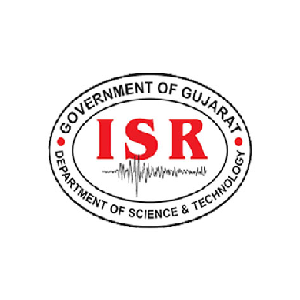Seismic Hazard Assessment and Microzonation Group
The ISR is equipped with state-of-the-art geophysical instruments and a fully functional geotechnical laboratory. Geophysical surveys and geotechnical laboratory testing are crucial components of seismic hazard assessment, as they provide detailed insights into subsurface conditions. Soil and rock samples collected through boreholes are tested to determine their mechanical and dynamic properties, essential for evaluating site response, liquefaction potential, and overall seismic behaviour. The following is a list of instruments available at ISR, along with their applications across various domains.
- Magnetotelluric (MT): The MT instrument is a passive geophysical system that measures natural variations in the Earth’s magnetic and electric fields. These measurements are used to derive the subsurface resistivity structure from a few meters to several hundred kilometers in depth. The MT instrument is used in a wide range of applications including earthquake and seismotectonic studies, crustal and lithospheric mapping, mantle conductivity assessment, and geothermal resource exploration.
- Transient Electromagnetic (TEM): The TEM system is used to measure time-dependent variations in the Earth’s magnetic field induced by an artificial current pulse. This allows for detailed imaging of subsurface resistivity structures. The TEM instrument is applied in groundwater exploration (aquifer mapping, water table estimation), detection of saline water intrusion, mineral and geothermal prospecting, and environmental investigations.
- Resistivity Imaging Instrument (ERT): The ERT measures subsurface resistivity variations using an array of electrodes. It provides two or three-dimensional imaging of the subsurface. Key applications include aquifer mapping, salinity intrusion detection, lithological differentiation, aiding both engineering and environmental studies.
- Vertical Electrical Sounding (VES): The VES setup is a portable system that measures vertical resistivity changes by varying electrode spacing. It is particularly effective for identifying subsurface stratigraphy and estimating layer thicknesses and resistivity values. The VES system is used for groundwater studies, soil and lithological profiling, and detecting weathered or fractured zones.
- Gravimeter: The gravimeter is used to detect variations in the Earth’s gravitational field, which reflect changes in subsurface density. This instrument is applied diversely, ranging from mineral exploration (locating dense ore bodies) and groundwater investigations (identifying aquifers or geological structures affecting groundwater flow) to engineering site characterization (detecting cavities or variations in bedrock density) and archaeological surveys (locating buried structures or features). Essentially, by precisely measuring subtle changes in gravity, one can indirectly map the distribution of different materials beneath the surface.
- Proton Precession Magnetometer (PPM): The PPM measures the total intensity of the Earth’s magnetic field with high precision. It is used for mineral exploration, archaeological investigations, environmental and engineering surveys, and geological mapping, particularly for identifying faults and basement structures.
- Multichannel Analysis of Surface Waves (MASW): The MASW system uses surface wave data from seismic sources to determine shear-wave velocity (Vs) profiles of the subsurface. It is widely used for site response studies, and seismic microzonation, making it essential for geotechnical and earthquake engineering applications.
- Microtremor: The microtremor system captures ambient ground vibrations using seismometers or recorders. These low-amplitude ground motions (microtremors) are widely used in civil engineering, geotechnical, and seismological applications such as site characterization in site-specific and seismic microzonation studies for identification of predominant frequency, site amplification, Vs30 estimation, identification of subsurface layers etc.
- Downhole Seismic Equipment: Downhole seismic tools are used to record wave propagation through boreholes for accurate measurement of shear-wave (Vs) and compressional-wave (Vp) velocities with depth. These measurements are crucial for dynamic soil characterization, ground response analysis, and seismic design of infrastructure.
- Ground Penetrating Radar (GPR): The GPR uses high-frequency electromagnetic waves to detect subsurface features in high resolution. It is applied in geological mapping, civil infrastructure assessment (utility detection, structural analysis), archaeological investigations, and environmental studies (e.g., contaminant plume mapping, buried waste detection).
- Geotechnical Lab: The geotechnical lab houses a suite of equipment that provides comprehensive capabilities for soil characterization and testing. Sieve analysis and hydrometer methods determine the grain-size distribution, crucial for classifying soils and predicting their behavior. Atterberg limits tests (liquid limit, plastic limit, shrinkage limit) define the consistency limits of fine-grained soils, influencing their engineering properties. Density bottle measurements establish the unit weight of soils, essential for many geotechnical calculations. The direct shear apparatus allows for determination of shear strength parameters, while the consolidation apparatus assesses the compressibility characteristics of soils under various loading conditions. Finally, the cyclic triaxial testing machine enables the evaluation of soil behavior under cyclic loading, particularly relevant for assessing liquefaction potential and seismic response. This combination of instruments allows for a thorough investigation of soil properties vital for geotechnical design and analysis.
